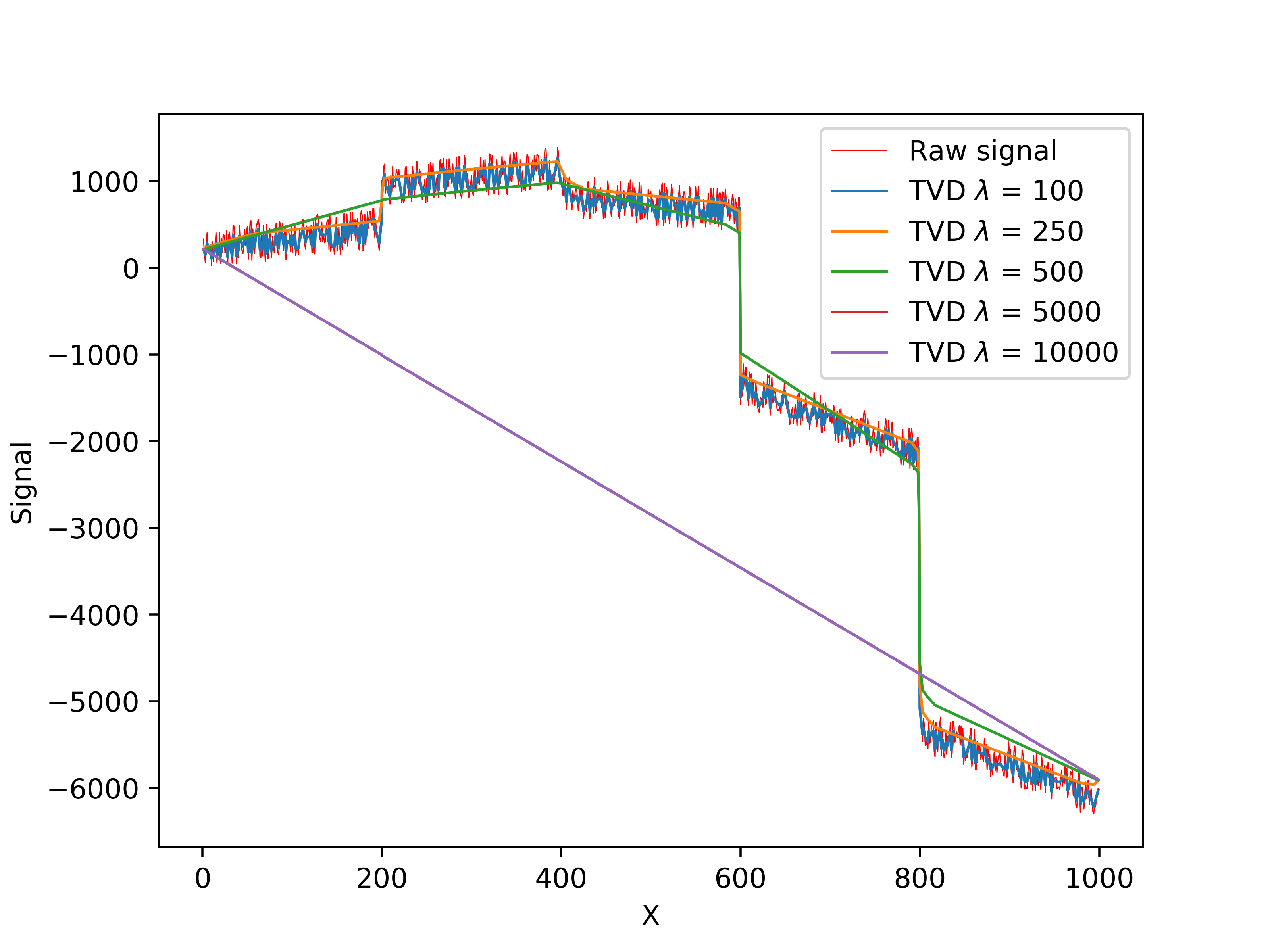TVDCondat2013 is a python portage of the 1D Total Variation Denoising algorithm from Condat 2013: A Direct Algorithm for 1D Total Variation Denoising (Sign. Proc. Letters, DOI:10.1109/LSP.2013.2278339) using xtensor and pybind11 to bind c++ and numpy.
The c++ core code has been adapted from C version available on the website of the manuscript orignal authors: http://www.gipsa-lab.grenoble-inp.fr/~laurent.condat/publications.html
Cite it if you use it.
This package is mostly to train myself packging a python package from c++ but also it is a really useful and efficient algorithm for:
- Direct denoising for data that can be represented by flat segments
- Indirect curve denoising using a detrend-denoise-retrend approach (Not implemented yet)
The package still is under active development
This work
So far the following denoising of a numpy array are implemented:
Quick use of the original denoising
from TVDCondat2013 import TVD
...
denoised = TVD(MyNumpyArray,lambda_TVD)
...
More experimental: curve denoising. So far the boundary condition might shift up or down the data. I am working on it
from TVDCondat2013 import D_TVD_R
...
curve_denoised = D_TVD_R((MyNumpyArray_of_curve,lambda_TVD))
...
More working examples in the examples folder.
This guide is directly from xtensor documentation, let me know if this doesn't work.
I am working on developping a pip and a conda package at point.
On Unix (Linux, OS X)
- clone this repository
pip install ./TVDCondat2013
On Windows (Requires Visual Studio 2015)
-
For Python 3.5:
- clone this repository
pip install ./TVDCondat2013
-
For earlier versions of Python, including Python 2.7:
xtensor requires a C++14 compliant compiler (i.e. Visual Studio 2015 on Windows). Running a regular
pip installcommand will detect the version of the compiler used to build Python and attempt to build the extension with it. We must force the use of Visual Studio 2015.- clone this repository
"%VS140COMNTOOLS%\..\..\VC\vcvarsall.bat" x64set DISTUTILS_USE_SDK=1set MSSdk=1pip install ./TVDCondat2013
Note that this requires the user building
TVDCondat2013to have registry edition rights on the machine, to be able to run thevcvarsall.batscript.
On Windows, the Visual C++ 2015 redistributable packages are a runtime requirement for this project. It can be found here.
If you use the Anaconda python distribution, you may require the Visual Studio runtime as a platform-dependent runtime requirement for you package:
requirements:
build:
- python
- setuptools
- pybind11
run:
- python
- vs2015_runtime # [win]Documentation for the example project is generated using Sphinx. Sphinx has the ability to automatically inspect the signatures and documentation strings in the extension module to generate beautiful documentation in a variety formats. The following command generates HTML-based reference documentation; for other formats please refer to the Sphinx manual:
TVDCondat2013/docsmake html
Running the tests requires pytest.
py.test .
